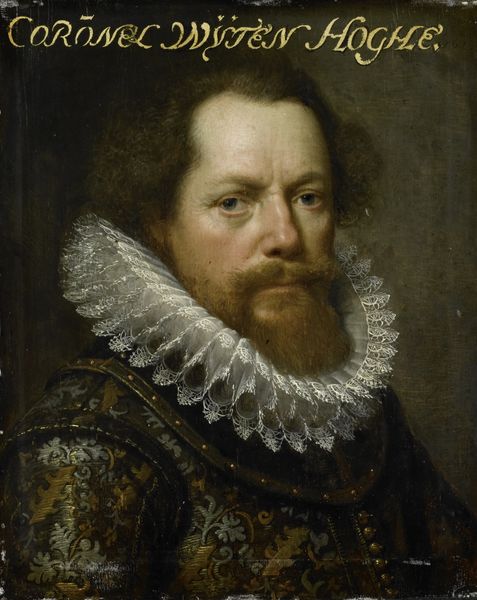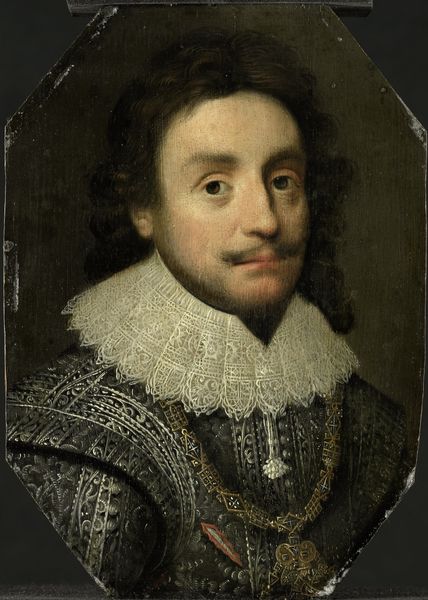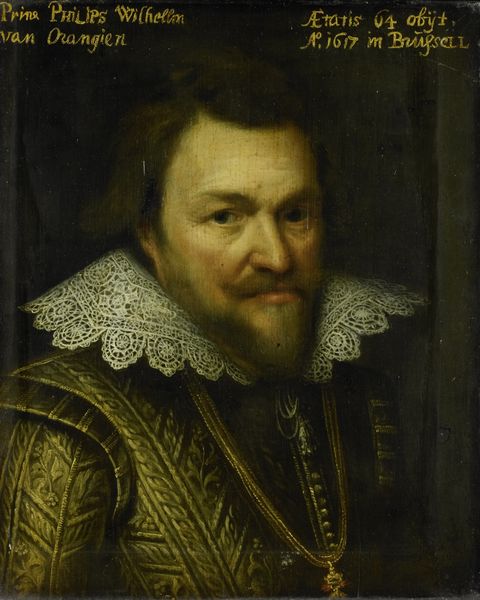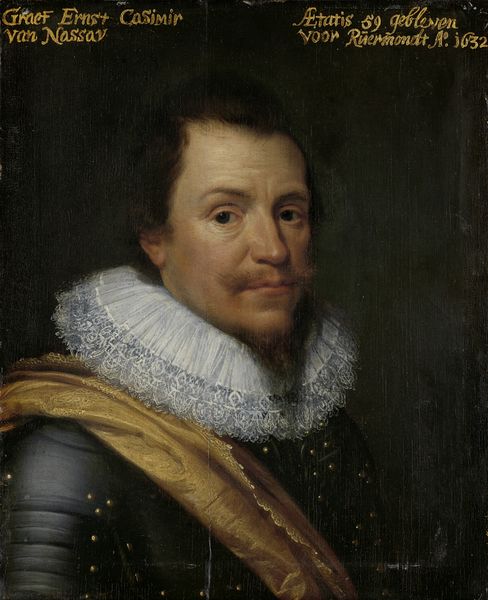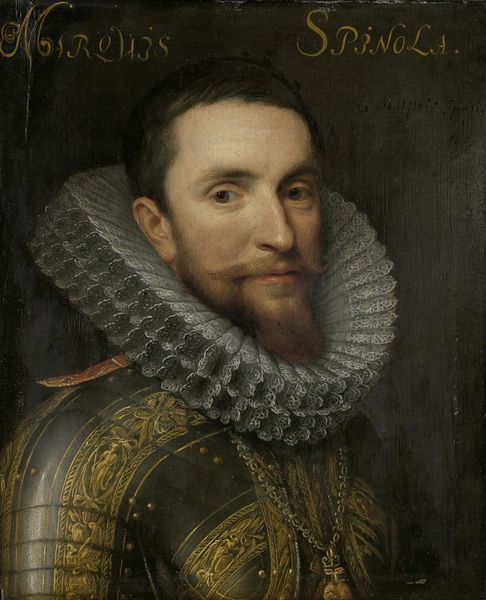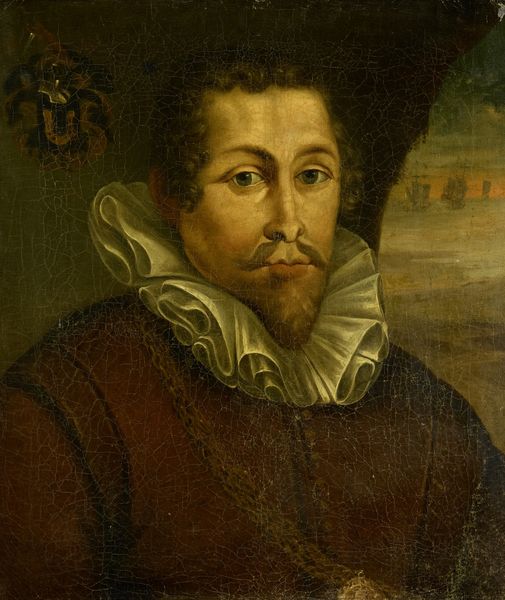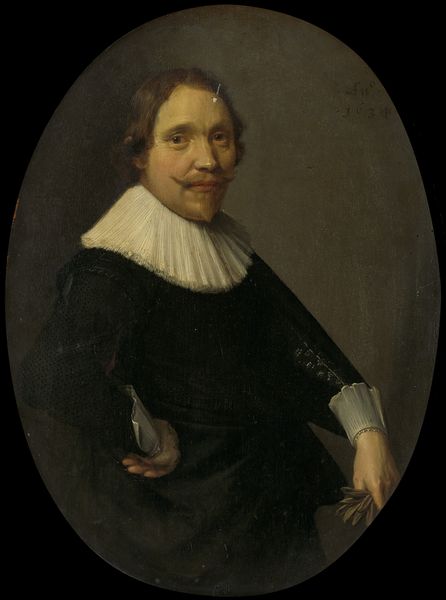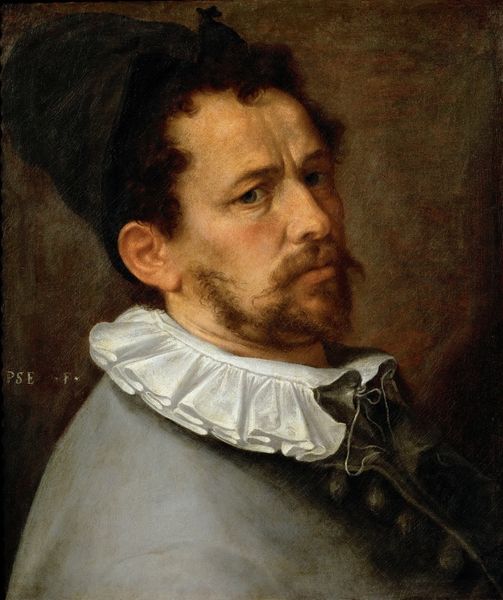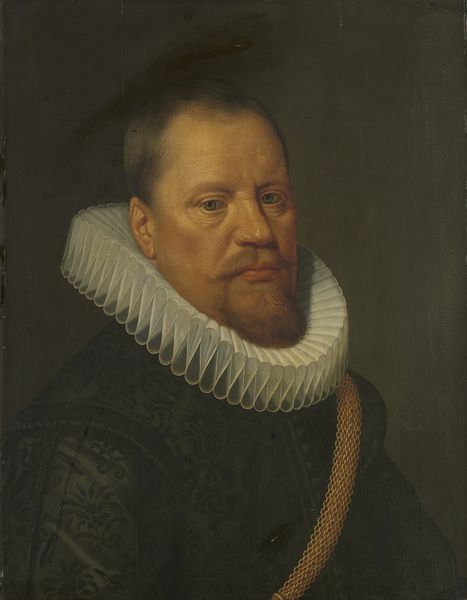
oil-paint
#
portrait
#
baroque
#
oil-paint
#
oil painting
#
history-painting
#
realism
Dimensions: support height 11.5 cm, support width 8.6 cm, frame height 16 cm, frame width 12.5 cm, outer size depth 2.5 cm
Copyright: Rijks Museum: Open Domain
Curator: This portrait, believed to be of Frederik Hendrik, Prince of Orange, dates to after 1612 and is attributed to Jacob Lyon. The artist rendered the likeness in oil paint. I'm struck by its...seriousness. Editor: The first thing I notice is the tangible nature of the materials depicted. Look at how the ruff collar seems almost constructed of layers upon layers of meticulously rendered fabric. Curator: That's right. The textures really bring it alive, even across the centuries. The Prince's armour, hinted at beneath the sash, is suggestive of his role as a military leader and politician. Editor: How do the socio-political conditions shape how the Prince of Orange would be perceived by a public viewer of this image, versus someone with firsthand knowledge of Frederik Hendrik himself? I imagine there must be interesting divergences... Curator: Surely, it presents him in the way he would like to be viewed by the upper class. The fine details within the lace and the glimmer of light on the metal elements must have taken hours upon hours to achieve. A collaborative labour effort, really. Editor: And what about the role of workshops in distributing images? Because it appears many artists created near-identical portraits of famous aristocrats. Did these painters ever innovate or add novelties within these paintings? Curator: Absolutely! Though clearly modelled from an initial original portrait, artists like Lyon would adapt to patrons' tastes. By including this artwork in galleries, we perpetuate Lyon's rendering of history and support particular cultural narratives over others. Editor: And it’s our responsibility to acknowledge and unpack those implications. The artist makes clear attempts to connect labor with subject, especially across material and craft techniques. Curator: Indeed. It gives me something to think about beyond its historical relevance. The work offers us multiple perspectives into production practices and sociopolitical implications. Editor: I agree, an image like this really exemplifies how visual representations can echo historical power dynamics and labour models.
Comments
No comments
Be the first to comment and join the conversation on the ultimate creative platform.
